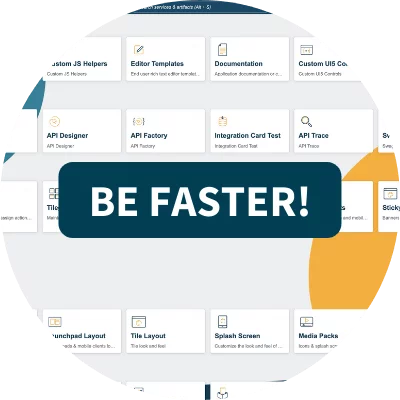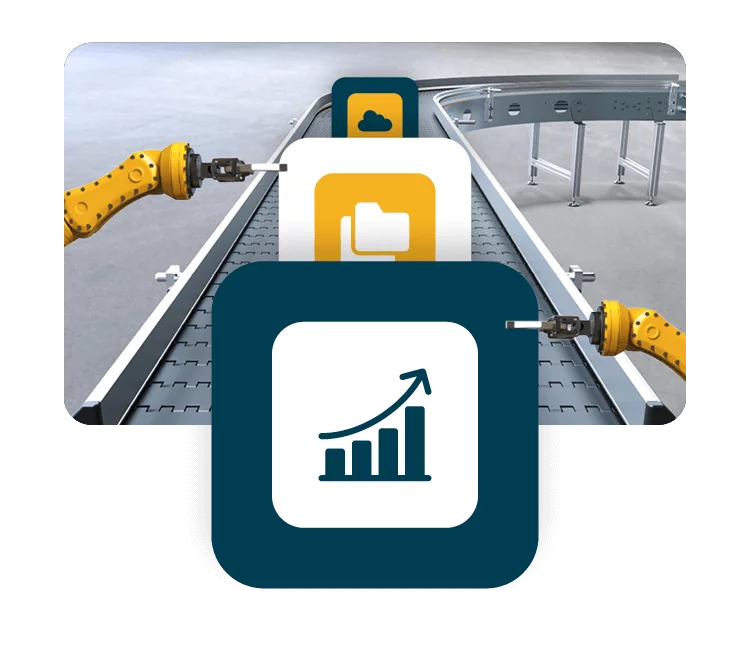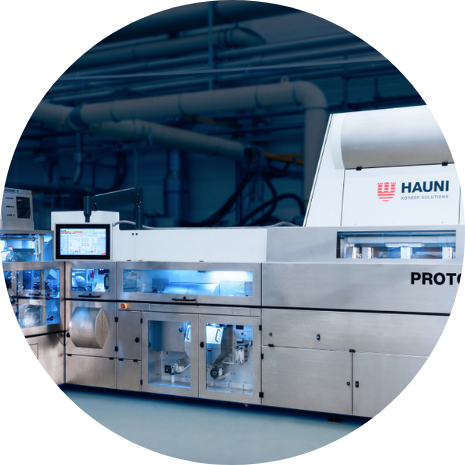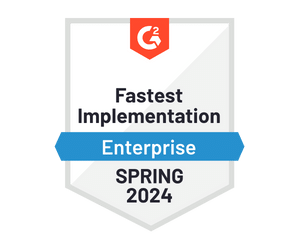Low-Code App
Development
that empowers Business & IT|

Say hello to Naia™!
Naia – Neptune AI assistant – unlocks seamless, no-code and low-code app development, available exclusively within Neptune DXP.

Gartner® Peer Insights™ 2023 Report!
We have been named an established vendor in the latest Gartner® Peer Insights™ “Voice of the Customer”: Enterprise Low-Code Application Platforms Report.
Build all your business apps with ease.
Integrate them even faster.
Neptune Software’s leading low-code, SAP-centric, enterprise app development platform digitizes and optimizes business processes and user interfaces – at scale and with ease. The platform gives IT professionals the right tools to build the apps they need.
We provide a fast, cost-effective, and future-proof way to industrialize the development of custom applications, turning your IT organization into an app factory – saving time and money on development, integration, and operations.
Discover how our customers are using low-code app development to change the way they do business.

Industrialize your enterprise app development
We created the Neptune DX Platform [short: Neptune DXP] to enable corporate IT teams to roll out enterprise and mobile apps at ease and maximum speed – empowering them to support your business needs.
Turn your IT team into an innovation powerhouse. Give them the tools to drive business results and totally reimagine how you build and integrate enterprise apps, on desktop, mobile or offline. Experience a unified digital experience and boosts productivity across your employees, customers, and partners.

Enterprise mobility. Holistic integration. Employee experience.
Employee digital experience
Establish a unified, enterprise-grade digital UX which matches the corporate design across your entire landscape.
Holistic integration
Reduce middleware dependencies. Our API-based integration seamlessly connects your systems, providing on-demand, on-the-go access to business logic.
Platform foundation
Neptune DXP features two complementing modules, enabling you to comprehensively address hybrid IT landscapes.

Enterprise mobility
Deliver beautiful, high-performing, easy-to-use mobile apps for your end-users via hybrid or progressive web apps, including support for sensors, scanners, and smart data glasses.
SAP-native development
Design, build, integrate, deploy, and maintain SAP Fiori apps—and in a fraction of the time it takes on other platforms.
Rapid application development
Bridge no-code, low-code and pro-code for maximum productivity and flexibility.
Bridging Business and IT
- Business
- IT
Create day-to-day apps that your company needs
Experience no-code/low-code app development which boosts
productivity, increases time to value and time to market with an easy toolset approach.



Develop digital solutions on your own terms
Say goodbye to the constraints of traditional app development.
Leverage in-house expertise to build and roll out modern business
apps at pace—and advance your organization in the process.

Quickly develop custom apps and functionality
using composable application building blocks.
Easily develop PWA, Web, Mobile and Offline apps or enable
functionality such as Chatbot and Voice.
Shorten and streamline development cycles with no-code,
low-code and pro-code tooling so you are not locked in.
Leverage your existing skillset and expertise–professional
and business developers alike.
Only SAP-native development platform running inside SAP to leverage existing ABAP code and
business processes to easily create mobile-ready and responsive SAP Fiori applications.
Easily mix and match OData, SOAP, RESTful APIs and any other data providers or cutting edge
tech such as Salesforce, SAP, Oracle, Blockchain, IoT, AI, and more.
Neptune Software has helped to transform hundreds of businesses
Low-Code ensures frictionless
transition to SAP S/4HANA for Hauni
Hauni manufactures machinery and equipment for the tobacco industry. They’re set apart as leaders in this challenging segment by their technical innovations and outstanding customer service. But Hauni needed a smooth move to SAP S/4HANA if they were to maintain this reputation.
Hauni worked intensively with the Neptune DXP, which was an ideal compromise between use of the actual SAP standard and a fallback to proprietary front-end technology. Today, the company can implement requirements independent of processes and end devices—and all on a single, centralized platform.
Read about it
Johnson & Johnson implement
low-code across their entire IT estate
World-leading healthcare brand Johnson & Johnson wanted to build a platform that would support integration and app development across the whole of their IT landscape. The solution needed to be future-proof, able to integrate emerging technologies, and support newer versions of SAP as they were introduced.
With the Neptune DXP, Johnson & Johnson were able to create apps utilizing their existing skill set and development resources. In time, they replaced their Global iTS, using Neptune Software for warehouse management.
See their success
CertainTeed transform their SAP
plant maintenance solution and
warehouse management
CertainTeed manufacture building materials, processing 125,000 work orders a year across 65 plants—so efficiency is everything. They needed fast, easy access to plant maintenance documents.
With the Neptune DXP, CertainTeed were able to design, build, integrate, deploy, and maintain SAP Fiori apps in a fraction of the time it would have taken with custom Fiori development. CertainTeed built 18 mobile solutions with low-code app development, automating warehouse management, and creating their own digital SAP plant maintenance solution.
Read more
Jollyroom increased
inbound efficiency by 195%
Scandinavian eCommerce company Jollyroom moved to a new warehouse, only to realize their standard SAP transactions and user experience couldn’t support the growing demands in their SAP warehouse management and distribution process.
Using Neptune Software, Jollyroom has since implemented a fully digital solution for their orders and cash flow, with automated picking jobs assigned to users through digital devices—no need for paper. Their entire inbound planning process was moved to various Neptune apps, leading to better quality control.
Watch more
Our Industry Analyst Recognitions

Spring 2024:Awarded Momentum Leader in Low Code Development Platforms, Mobile App Development Platforms, Digital Experience Platforms, and Application Development Platforms, Workplace Innovation Platforms, SAP Store

Spring 2024: Awarded Fastest Implementation in Digital Experience Platforms for Enterprises
Yes we eat cookies on Planet Neptune!
To provide you with the best browsing experience, personalized content and targeted ads, we are using cookies to collect that information. We hope you're ok with it. By clicking "I agree" you accept our cookies. Feel free to refer to our cookie policy for a description. I agree SettingsPrivacy Overview
| Cookie | Duration | Description |
|---|---|---|
| bcookie | 2 years | This cookie is set by linkedIn. The purpose of the cookie is to enable LinkedIn functionalities on the page. |
| lang | session | This cookie is used to store the language preferences of a user to serve up content in that stored language the next time user visit the website. |
| lidc | 1 day | This cookie is set by LinkedIn and used for routing. |
| Cookie | Duration | Description |
|---|---|---|
| _gat | 1 minute | This cookies is installed by Google Universal Analytics to throttle the request rate to limit the colllection of data on high traffic sites. |
| YSC | session | This cookies is set by Youtube and is used to track the views of embedded videos. |
| Cookie | Duration | Description |
|---|---|---|
| _ga | 2 years | This cookie is installed by Google Analytics. The cookie is used to calculate visitor, session, campaign data and keep track of site usage for the site's analytics report. The cookies store information anonymously and assign a randomly generated number to identify unique visitors. |
| _gat_gtag_UA_28799357_1 | 1 minute | This cookie is set by Google and is used to distinguish users. |
| _gat_UA-28799357-1 | 1 minute | This is a pattern type cookie set by Google Analytics, where the pattern element on the name contains the unique identity number of the account or website it relates to. It appears to be a variation of the _gat cookie which is used to limit the amount of data recorded by Google on high traffic volume websites. |
| _gid | 1 day | This cookie is installed by Google Analytics. The cookie is used to store information of how visitors use a website and helps in creating an analytics report of how the website is doing. The data collected including the number visitors, the source where they have come from, and the pages visted in an anonymous form. |
| Cookie | Duration | Description |
|---|---|---|
| _fbp | 3 months | This cookie is set by Facebook to deliver advertisement when they are on Facebook or a digital platform powered by Facebook advertising after visiting this website. |
| bscookie | 2 years | This cookie is a browser ID cookie set by Linked share Buttons and ad tags. |
| fr | 3 months | The cookie is set by Facebook to show relevant advertisments to the users and measure and improve the advertisements. The cookie also tracks the behavior of the user across the web on sites that have Facebook pixel or Facebook social plugin. |
| IDE | 1 year 24 days | Used by Google DoubleClick and stores information about how the user uses the website and any other advertisement before visiting the website. This is used to present users with ads that are relevant to them according to the user profile. |
| test_cookie | 15 minutes | This cookie is set by doubleclick.net. The purpose of the cookie is to determine if the user's browser supports cookies. |
| UserMatchHistory | 1 month | Linkedin - Used to track visitors on multiple websites, in order to present relevant advertisement based on the visitor's preferences. |
| VISITOR_INFO1_LIVE | 5 months 27 days | This cookie is set by Youtube. Used to track the information of the embedded YouTube videos on a website. |
| Cookie | Duration | Description |
|---|---|---|
| AnalyticsSyncHistory | 1 month | No description |
| CONSENT | 16 years 7 months 13 hours | No description |
| cookielawinfo-checkbox-functional | 1 year | The cookie is set by GDPR cookie consent to record the user consent for the cookies in the category "Functional". |
| cookielawinfo-checkbox-others | 1 year | No description |
| li_gc | 2 years | No description |
| wp23527 | 1 year | No description |














